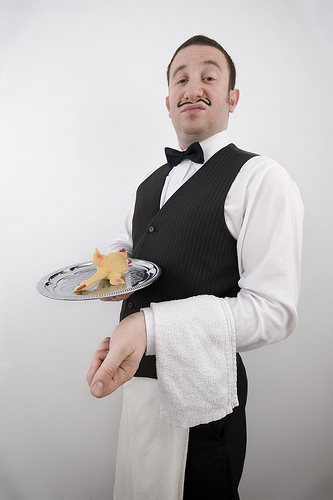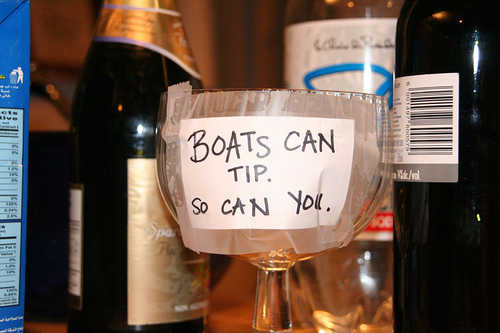[GUEST POST] Tipping and Gamification

Mark Schreiber
Guest Writer
Disclaimer: Guest posts represent the diversity of opinion within the world of gamification, and the views and opinions expressed in guest articles are those of the author.

How many of you have had the following experience at a Paris bistro? You find a table on the sidewalk and before you’ve scraped your heavy chair across the pavement and sat down a waiter steps over with a menu and says, “Bonjour, je m’appelle Pierre et je serais votre serviteur aujourd’hui.” (Hello, my name is Pierre, I’ll be your waiter today.)
Well, none of you have, because it’s never happened. You may put it down to French rudeness or contempt for foreigners, but the truth is French waiters aren’t friendly because they don’t have to be friendly, because they don’t rely on tips for a significant share of their earnings.
Tipping is one of the most entrenched and successful forms of gamification. It’s a standard game element – a reward – ritually given for satisfactory service at the end of a meal or haircut or taxi ride. As employees we don’t like being dependent on the kindness of strangers. As customers we don’t like forking over that 15%, or having to calculate it every lunch time. But think for a moment what that tip does, how it changes the relationship.
I’ve notice that where tips are most customary – that is, where giving less than 15% is tantamount to a slap in the face – the service is uniformly excellent. American restaurants, for example. How many terrible waitresses have you encountered in the last year? Probably less than 5% if you live in the U.S. But where tips are less customary, such as taxi rides, the service is more unpredictable. My view is that taxi drivers, knowing they cannot count on a 15% tip for satisfactory service, don’t feel it’s worth changing their behavior. If they’re naturally friendly, they’re friendly. If not, they’re not going to fake it for the mere possibility of a tip.

But waiters and waitresses will fake it. They have to. The incentive of a tip makes it worth it, after all. And that change in behavior starts the moment you sit down. You don’t have to call them over, they come to you. They smile, they might tell you their name. They might engage in mideval roleplay by saying, “I’ll be your waitress today,” as if they belong to you. As if you are, at least as long as you sit at your table, Lord of the Manor, with his customary servants, (but also the customary obligation of your class to take care of your people, in this case in the form of tipping.)
But if tipping works so well, why don’t we tip everyone? Why don’t we tip doctors and teachers? Because tipping is gamified status. And in order to play the part of a lord you need a traditional servant position on the other end, such as wait staff. (The income of the employee is less important than the position itself. Professional golf caddies can make hundreds of thousands of dollars. They still receive tips in the form of formalized bonuses based on their employer’s performance.
The lesson here for digital gamification is that you can’t gamify everything the same way. A good gamification system works because it makes sense for the relationships it gamifies.
Published on 27 July, 2012
This post was contributed by Mark Schreiber, guest writer
Mark Schreiber is a full time novelist since graduating high school at the age of 15. He also engineered his sister’s bestselling writing career and started and run several businesses, including a solo medical practice. He’s currently interested in technological entrepreneurship in Singapore and Silicon Valley.
Mark Schreiber is a full time novelist since graduating high school at the age of 15. He also engineered his sister’s bestselling writing career and started and run several businesses, including a solo medical practice. He’s currently interested in technological entrepreneurship in Singapore and Silicon Valley.
